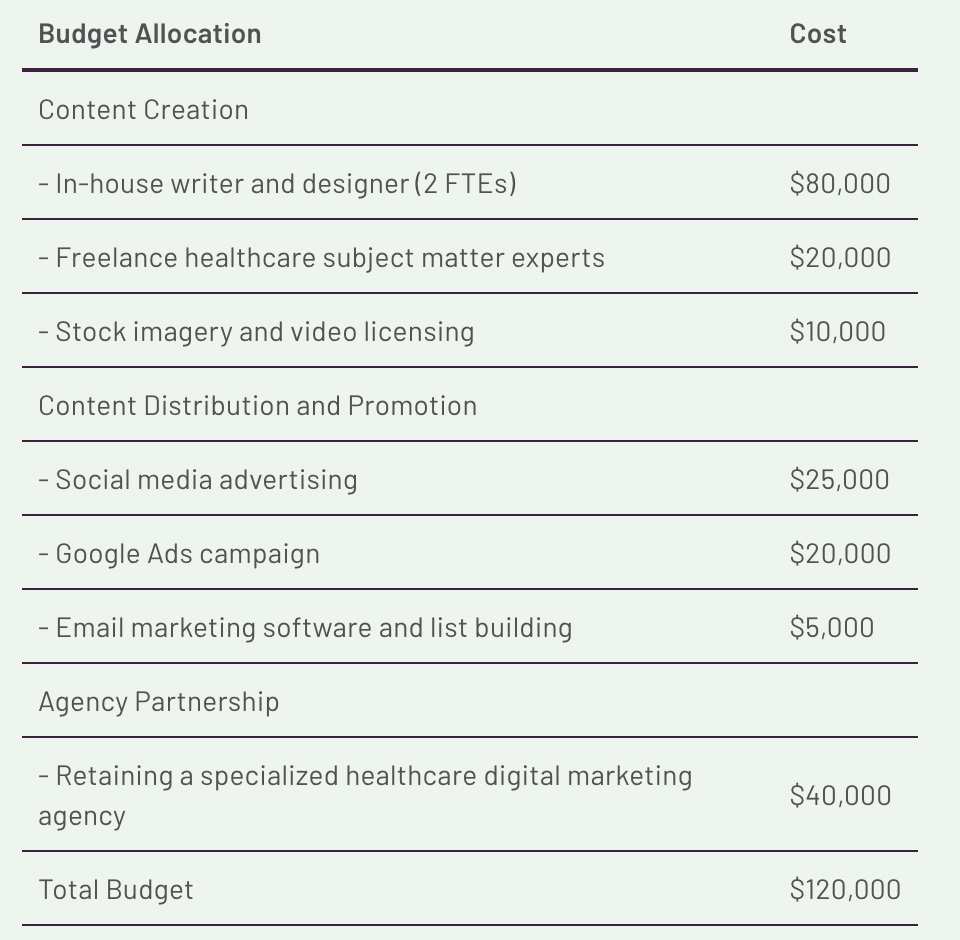Diving into the realm of the healthcare industry requires a deep understanding of your target audience. Identifying their demographics, needs, and pain points is crucial for crafting effective marketing strategies and communication techniques.
By determining who your audience is, you can tailor your message to resonate with them on a personal level. Understanding their age, gender, location, income level, and other relevant demographics will help you create targeted campaigns that speak directly to their needs.
Moreover, recognizing the challenges and pain points your audience faces in the healthcare industry is essential for offering solutions that address their specific concerns. Whether it’s access to affordable care, managing chronic conditions, or navigating insurance complexities, knowing what keeps your audience up at night will guide your messaging and service offerings.
Overall, honing in on your target audience in the healthcare industry will set the foundation for successful marketing initiatives and customer engagement. Take the time to truly comprehend who they are, what they need, and what challenges they face so you can effectively connect with them and ultimately drive business growth.
- Increased patient engagement and loyalty
- Establishing thought leadership and credibility
- Improving search engine visibility and website traffic
- Supporting lead generation and conversions
- Defining your target audience
- Creating valuable and relevant content
- Distributing content through multiple channels
- Measuring and optimizing performance

Setting Goals and Objectives
When developing a content marketing strategy, it is essential to clearly define what you want to achieve. Setting specific, measurable, achievable, relevant, and time-bound (SMART) goals is key to ensuring the success of your strategy.
By setting goals and objectives, you give direction to your content marketing efforts. Whether it is increasing brand awareness, generating leads, driving website traffic, or improving customer engagement, having clear goals in place will help you stay focused and measure the effectiveness of your content.
When setting goals, it is important to ensure they align with your overall business objectives. This will help you create content that is not only engaging but also contributes to the growth and success of your business.
Take the time to define your goals and objectives at the outset of your content marketing strategy. Be specific about what you want to achieve, and make sure your goals are measurable so that you can track your progress over time. Setting achievable goals that are relevant to your target audience will increase the likelihood of success.
Remember, setting goals and objectives is not a one-time task. Regularly review and adjust your goals as needed to ensure they continue to align with your business objectives and the evolving needs of your audience.
- Improving brand recognition and reputation
- Positioning your healthcare organization as an industry leader
- Attracting potential patients or clients
- Encouraging website conversions (appointment bookings, newsletter signups)
- Educating healthcare consumers
- Providing valuable information and resources
- Addressing common questions and concerns

Research and Competitive Analysis
Conduct thorough research on competitors and industry trends to identify gaps and opportunities for your strategy.
Competitor Analysis
When conducting research on competitors, it is essential to examine their strengths and weaknesses. By analyzing their strategies, products, and market positioning, you can identify areas where your business can differentiate itself. Understanding your competitors’ tactics will help you refine your own strategy and stay ahead in the market.
Industry Trends
Tracking industry trends is crucial to staying competitive and relevant. By monitoring the latest developments, emerging technologies, and changing consumer preferences, you can adapt your strategy to meet the evolving market demands. Stay informed about new opportunities and potential threats in the industry to position your business for success.
- Identifying direct and indirect competitors
- Analyzing their content strategies and marketing channels
- Identifying content formats, topics, and engagement metrics
- Recognizing strengths, weaknesses, and opportunities

Developing a Content Plan
Create a detailed plan outlining the types of content you will create, your content calendar, and distribution channels.
Types of Content
When developing a content plan, it is crucial to outline the various types of content you will be creating. This can include blog posts, social media updates, videos, infographics, and more. Each type of content serves a different purpose and should be aligned with your overall marketing goals.
Content Calendar
A content calendar is essential for staying organized and ensuring that you are consistently publishing high-quality content. It helps you plan ahead, stay on track with deadlines, and maintain a consistent posting schedule. Your content calendar should include the topics, deadlines, who is responsible for creating each piece of content, and when it will be published.
Distribution Channels
In addition to creating great content, you need to have a strategy for how you will distribute it. This includes determining which channels you will use to reach your target audience, such as social media platforms, email newsletters, your website, or other marketing channels. By selecting the right distribution channels, you can maximize the reach and impact of your content.
- Aligning content with target audience and business goals
- Incorporating a mix of content types (blogs, videos, infographics)
- Types of content to create
- Educational articles and blog posts
- Informative videos and webinars
- Interactive quizzes and assessments
- Adhering to HIPAA and other industry guidelines
- Obtaining necessary approvals and reviews

Content Creation and Optimization
Produce high-quality, relevant content that resonates with your audience and optimize it for search engines.
Creating and optimizing content is crucial for attracting and engaging your target audience. By producing high-quality and relevant content, you can capture the interest of your audience and establish credibility. This content should resonate with your audience’s needs and interests, providing valuable information or entertainment.
Content Quality
When creating content, it is essential to focus on quality. Ensure that your content is well-researched, organized, and well-written. By delivering value to your audience through informative and engaging content, you can build trust and encourage repeat visits to your website.
Content Relevance
Relevance is key when creating content for your audience. Make sure that your content addresses topics that are important to your target audience and provides solutions to their problems. By understanding your audience’s needs and interests, you can tailor your content to resonate with them effectively.
Search Engine Optimization
Optimizing your content for search engines is essential for improving its visibility and reach. Use relevant keywords, meta tags, and descriptions to help search engines understand the content of your pages. By implementing SEO best practices, you can increase your chances of ranking higher in search engine results and attracting more organic traffic to your website.
- Identifying relevant and high-intent keywords
- Analyzing search volume, competition, and intent
- Implementing on-page and off-page SEO techniques
- Optimizing website content and metadata
- Building high-quality backlinks and citations

Distribution and Promotion
When it comes to distributing and promoting your content, it is crucial to utilize various channels effectively. Social media platforms such as Facebook, Twitter, Instagram, and LinkedIn can help you reach a wide audience and engage with your followers. By creating engaging posts, sharing valuable information, and interacting with your audience, you can increase your visibility and attract more followers.
Email marketing is another powerful tool for distributing your content. By building an email list of subscribers who are interested in your content, you can send out regular newsletters, updates, and promotions to keep them engaged and informed. Personalizing your emails and including relevant content can help improve open rates and click-through rates.
Additionally, forming partnerships with other businesses or influencers can extend your reach and introduce your content to new audiences. Collaborating on projects, hosting joint events, or participating in cross-promotions can help you tap into new markets and gain credibility in your industry.
Overall, it is essential to have a well-rounded distribution and promotion strategy that leverages social media, email, and partnerships to maximize the impact of your content and reach your target audience effectively.
- Leveraging social media platforms
- Maintaining an active presence on relevant platforms
- Engaging with your target audience and sharing content B
- Email marketing campaigns
- Building an email subscriber list
- Creating targeted, personalized email content
- Paid advertising strategies
- Exploring platform-specific ad options (Google Ads, social media ads)
- Allocating budget and optimizing ad campaigns

Monitoring and Measuring Success
Tracking key metrics is essential in evaluating the performance of your content marketing strategy. By measuring the success of your efforts, you can identify what is working well and where improvements are needed.
Track Key Metrics
Key metrics may include website traffic, engagement rates, conversion rates, and social media analytics. By tracking these metrics regularly, you can gain valuable insights into the effectiveness of your content marketing strategy.
Evaluate Performance
Once you have collected data on key metrics, take the time to analyze and evaluate the performance of your content. Look for trends, patterns, and areas that may need improvement.

Make Necessary Adjustments
Based on your evaluation, make necessary adjustments to your content marketing strategy. This may involve changing the type of content you produce, the channels you use to distribute it, or the messaging you convey.
Continuous Improvement
Monitoring and measuring success is an ongoing process. Continuously track key metrics, evaluate performance, and make adjustments to ensure that your content marketing strategy is always optimized for success.
- Tracking key performance indicators (KPIs)
- • Website traffic and engagement metrics
- • Lead generation and conversion rates
- • Social media reach and engagement
- Analyzing data to optimize strategies
- • Identifying high-performing content and channels
- • Adjusting content, distribution, and targeting based on insights
Budgeting and Resource Allocation
It is important to understand all the above concepts for allocating budget for content marketing initiatives
- Costs for content creation
- Hiring in-house writers, designers, and videographers
- Outsourcing to freelance healthcare content creators
- Licensing stock imagery, graphics, and video footage
- Costs for content distribution and promotion
- Social media advertising on platforms like Facebook, LinkedIn, and Instagram
- Google Ads for search engine marketing and display advertising
- Email marketing software and list building efforts
- Potential investment in healthcare marketing agencies
- Engaging a specialized healthcare digital marketing agency
- Leveraging their industry expertise and content creation capabilities
- Accessing advanced analytics and optimization tools
Points to keep in mind when you consider to outsource to healthcare marketing agencies like ours
- Evaluating the agency’s experience in the healthcare industry
- Understanding their track record with healthcare clients
- Assessing their familiarity with healthcare regulations and compliance
- Assessing their content creation and optimization capabilities
- Reviewing their portfolio of healthcare-related content
- Analyzing their approach to keyword research and SEO
- Examining their data-driven optimization strategies
Example: A regional hospital network with 5 locations is looking to invest in a comprehensive content marketing strategy. They have allocated a budget of $120,000 for their first year of content marketing initiatives. Here’s how they plan to allocate the resources:
Content Creation:
- In-house writer and designer (2 FTEs): $80,000
- Freelance healthcare subject matter experts: $20,000
- Stock imagery and video licensing: $10,000
Content Distribution and Promotion:
- Social media advertising: $25,000
- Google Ads campaign: $20,000
- Email marketing software and list building: $5,000
Agency Partnership:
- Retaining a specialized healthcare digital marketing agency: $40,000
Total Budget Allocation: $120,000

Adapting to Changes
It is crucial to stay agile and responsive to changes in the healthcare industry in order to be successful. As new technologies emerge and regulations evolve, it is important to modify your content marketing strategy accordingly. Adapting to these changes will not only help you stay ahead of the competition but also ensure that your messaging remains relevant to your target audience.
Importance of continuous optimization in content marketing strategy
- Regularly reviewing and adjusting strategies based on performance
- Analyzing metrics and KPIs to identify high-performing and underperforming content – Making data-driven decisions to allocate resources more effectively
- Continuously testing and refining content formats, distribution channels, and targeting
- Staying up-to-date with industry best practices and consumer preferences
- Monitoring evolving healthcare trends, regulations, and consumer behavior
- Adapting content strategies to address emerging needs and pain points
- Leveraging the latest content marketing techniques and technologies
By implementing a consistent, data-driven approach to content marketing, healthcare organizations can effectively reach, engage, and convert their target audience. If you’re looking to elevate your healthcare content marketing efforts, consider partnering with TIQ Digital, one of the leading healthcare marketing agencies. Our team of industry experts can help you develop and execute a tailored content strategy that drives measurable results.
Contact TIQ Digital today to learn more about our healthcare content marketing solutions and how we can help your organization thrive in the digital landscape.
